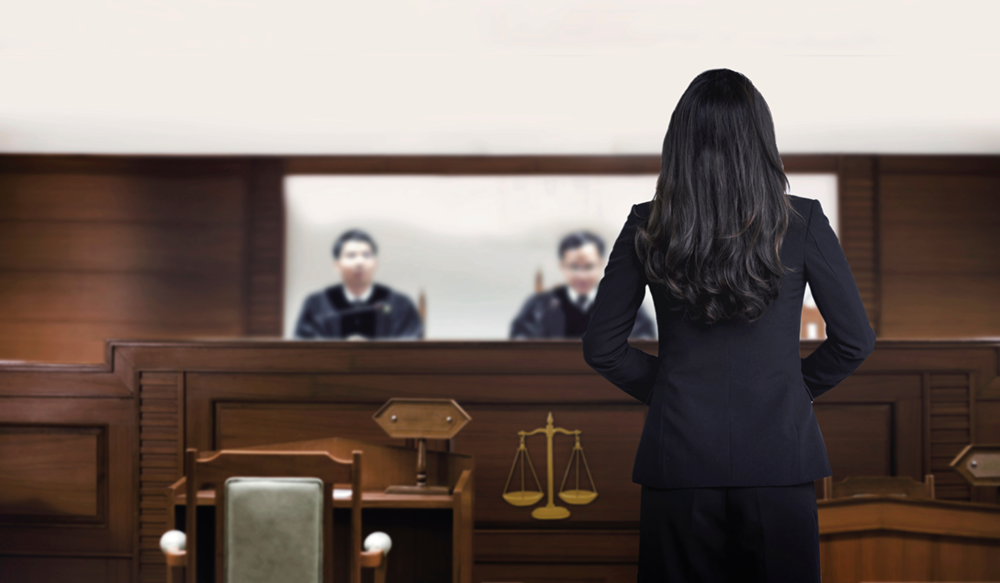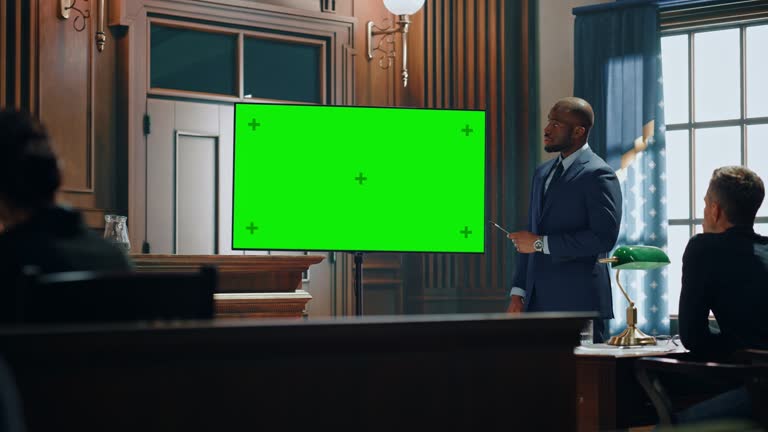Browsing the Intricacies of Test Presentations: Tips for Seamless Delivery and Compelling Disagreements
In the world of lawful procedures, the art of test discussion stands as a vital component of success. As lawyers navigate the complex internet of court room characteristics, the capability to perfectly provide debates and evidence while captivating the court's attention comes to be paramount. The intricacies intrinsic in trial discussions call for a delicate equilibrium of finesse, approach, and skill. By honing methods that make sure a refined delivery and crafting compelling disagreements that resonate with the audience, lawyers can dramatically improve their campaigning for. In a globe where persuasion preponderates, grasping the complexities of trial presentations is not simply a choice however a necessity for those seeking to prevail in the court room.

Comprehending Test Objectives
To efficiently browse a test, it is crucial to have a clear understanding of the goals that need to be accomplished. Prior to tipping into the courtroom, legal teams should specify their objectives and wanted end results. These objectives work as directing principles throughout the trial, forming strategies and influencing decision-making processes.
Comprehending trial goals includes a detailed evaluation of the instance, lawful criteria, and the customer's finest rate of interests. Trial Presentations. It calls for a thorough exam of the realities, recognizing vital concerns, and preparing for possible difficulties. By establishing certain and measurable goals, lawyers can customize their presentations and arguments to align with the wanted outcomes
Additionally, a clear understanding of trial objectives makes it possible for lawful teams to prioritize proof, witnesses, and lawful disagreements efficiently. It permits the growth of a systematic narrative that resonates with the court and court, strengthening the overall instance presentation.

Organizing Evidence Effectively
Having a clear understanding of trial purposes lays the structure for arranging evidence effectively in legal process - Trial Presentations. By lining up the presentation of evidence with the wanted end results of the trial, legal groups can reinforce their disagreements and improve their persuasiveness. One essential aspect of arranging evidence is categorization. Organizing proof based on motifs or significance to particular lawful components can aid simplify the presentation and make complicated details more absorbable for the court or court.
One more key component in organizing proof efficiently is developing a rational flow. Offering evidence in a systematic and sequential way can aid develop an engaging narrative that sustains the lawful disagreements being made. In addition, using aesthetic help such as graphs, graphes, or timelines can even more boost the organization of evidence and aid in clarifying complicated relationships or sequences of occasions.
In addition, guaranteeing that all proof offered is relevant and admissible to the situation is essential. Inadmissible or pointless proof can detract from the strength of the disagreement and possibly damage the reliability of the providing celebration. A thorough testimonial and option procedure need to be carried out to include only the most impactful my link and lawfully sound evidence in the trial presentation.
Crafting Persuasive Narratives
Crafting engaging stories plays a pivotal function in providing convincing debates throughout lawful process. A well-crafted narrative has the power to captivate the audience, evoke emotions, and eventually persuade the decision in support of today event. When creating a story for a test discussion, it is necessary to develop a clear story that highlights vital factors and attaches them in a systematic fashion. Begin by laying out the realities of the instance in an engaging fashion, making sure that the series of events is simple to follow. Introduce personalities properly, giving history details that assists the audience understand their motivations and activities. Additionally, incorporating vivid summaries and appealing language can bring the narrative to use this link life, making it more memorable for the discretionary. By weaving together proof, statement, and legal arguments right into a persuasive and natural narrative, lawyers can successfully advocate for their customers and boost the possibility of a favorable end result in the court.
Mastering Aesthetic Aids
Efficient use of visual help is vital to enhancing the effect and quality of trial presentations. Aesthetic help, when utilized tactically, have the power to streamline complex info, enhance key points, and leave an enduring impression on the discretionary. To understand aesthetic aids in trial presentations, it is vital to ensure that they are clear, concise, and appropriate to the debates being made.
When including visual aids, such as charts, charts, pictures, or timelines, into a trial discussion, it is vital to maintain them aesthetically appealing yet professional. The visuals should complement the verbal disagreements, supplying a graph of the info being gone over without frustrating the target market with unneeded details.
Additionally, exercising with the visual aids in advance is necessary to make certain a smooth distribution throughout the trial. Familiarizing oneself with the content, transitions, and timings of each visual help can aid preserve the flow of the presentation and prevent technical problems that might develop.
Providing Impactful Closing Disagreements
An engaging closing argument offers as the culmination of a test presentation, enveloping the core narrative and convincing the court and jury in the direction of a beneficial choice. Begin by describing the major disagreements that sustain your client's setting, emphasizing why the evidence offered throughout the trial sustains your narrative.
Additionally, including emotional allure can even more reinforce check these guys out your closing argument. By connecting and humanizing the instance on an individual level with the decision-makers, you can stimulate compassion and understanding, influencing their understanding of the realities presented. Furthermore, stating the legal standards that have to be met for a beneficial judgment can enhance the validity of your position. Eventually, a well-crafted closing debate should leave a long lasting perception, engaging the court and jury to regulation in your customer's support.
Verdict
Finally, mastering trial presentations includes comprehending goals, arranging proof, crafting stories, making use of aesthetic help, and supplying impactful closing debates. By applying these approaches effectively, lawyers can present their case seamlessly and make engaging arguments in the court room. It is crucial to navigate the intricacies of test discussions with accuracy and skill to accomplish success in lawful proceedings.
By lining up the discussion of evidence with the desired results of the trial, lawful groups can reinforce their disagreements and enhance their persuasiveness (Trial Presentations). To master aesthetic aids in trial discussions, it is essential to make certain that they are clear, succinct, and appropriate to the arguments being made
A compelling closing debate offers as the culmination of a test discussion, encapsulating the core story and convincing the judge and court towards a beneficial choice. Begin by detailing the primary arguments that sustain your client's placement, highlighting why the evidence offered throughout the trial sustains your narrative.In verdict, grasping trial discussions involves recognizing goals, arranging evidence, crafting stories, using aesthetic aids, and supplying impactful closing disagreements.